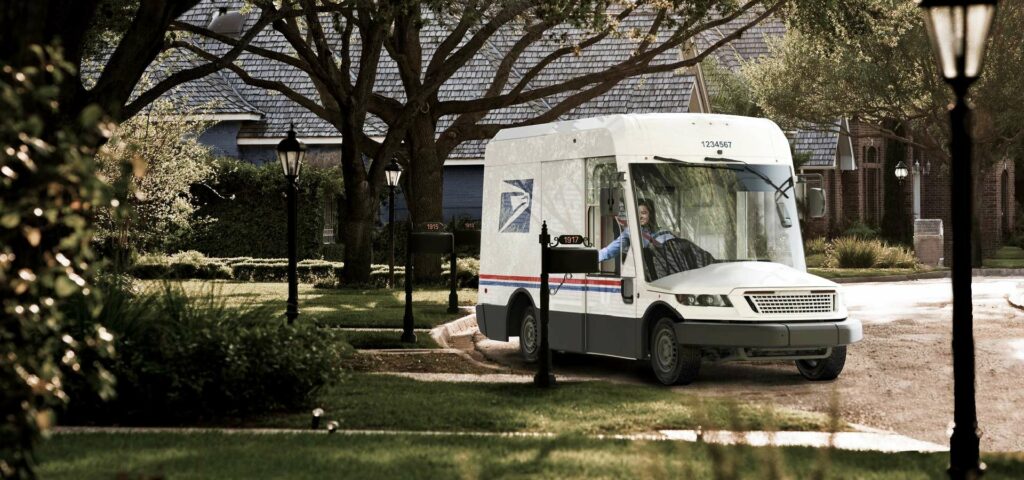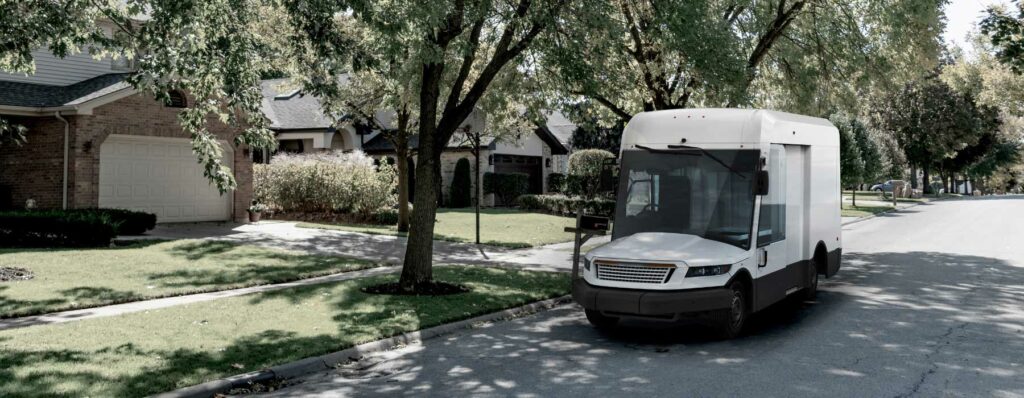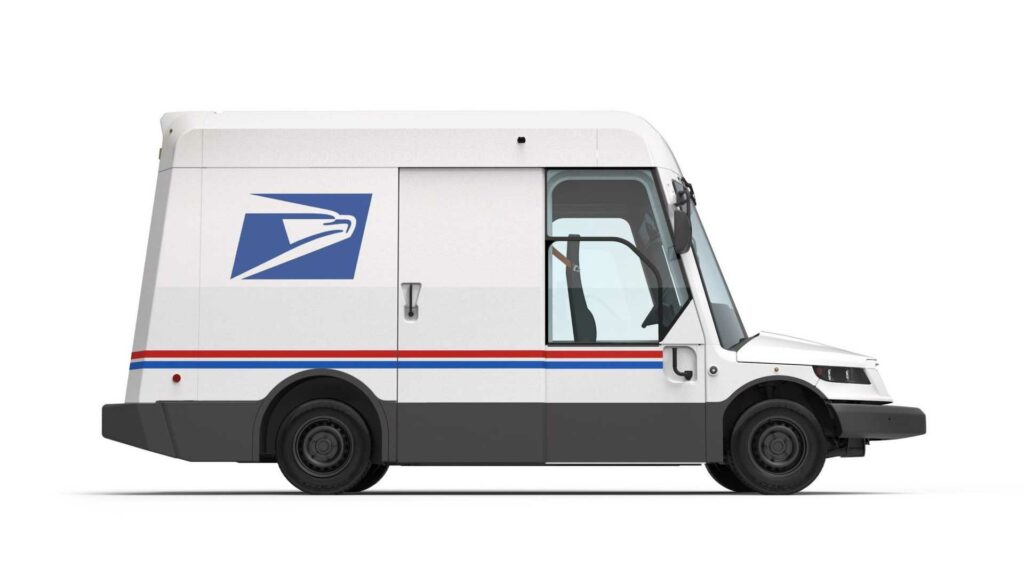
The U.S. Postal Service (USPS) is known for its reliable deliveries, but when it comes to the appearance of its new Next Generation Delivery Vehicles (NGDVs), “beautiful” isn’t the first word that comes to mind. These trucks are designed to get the job done, not to win beauty contests.
With their oversized windshields, duck-bill-like hoods, and massive bumpers, they stand out more for their utility than their looks. Despite their odd appearance, however, postal workers are raving about the improvements they bring over the previous fleet of Grumman Long Life Vehicles (LLVs).
The End of an Era: Retiring the Grumman Long Life Vehicles
The Grumman (NOC) LLVs have been on the road since 1987, making them one of the longest-serving vehicle fleets in USPS history. Originally built to last 25 years, these vehicles have soldiered on for far longer, but it’s become painfully clear that they’re overdue for replacement.
As they aged, the LLVs became notorious for their inefficiency—boasting just 9 miles per gallon—and for their lack of modern safety and comfort features. To make matters worse, in the past year alone, nearly 100 of them caught fire, putting both mail carriers and the packages they carry at risk.

While the LLVs were revolutionary in their time, they’ve become a burden. The old trucks were loud, hot, and prone to breakdowns. Drivers relied on a small fan or simply opened the doors for ventilation during the summer, turning each delivery route into a sweltering ordeal.
Yet, despite their flaws, they managed to outlive their projected lifespan by decades, a testament to their original design. But now, it’s time for the next generation.
Comfort and Safety Redefined
With the arrival of the NGDVs, the USPS is not just updating its fleet—it’s modernizing the experience for its workers. These trucks are built with safety and comfort at the forefront, a significant shift from the older Grumman vehicles.
For starters, the new trucks come equipped with essential safety features such as airbags, 360-degree cameras, blind-spot monitoring, collision sensors, and anti-lock brakes. These features, which have been standard in most consumer vehicles for years, are a massive leap forward for postal workers who’ve been driving the outdated LLVs.
One of the biggest improvements, however, is the introduction of air conditioning—a feature many postal workers have been eagerly awaiting. “I promise you, it felt like heaven blowing in my face,” said Avis Stonum, a carrier who experienced the air-conditioned NGDV for the first time.
In regions like the Deep South and the Southwest, where summers are scorching, this improvement is not just a matter of comfort but one of health and safety.
Bigger, Better, and More Efficient
The NGDVs aren’t just about safety; they’ve also been designed with practicality in mind. The new trucks are taller and more spacious, allowing postal workers to stand up straight inside without bumping their heads—something impossible in the cramped confines of the old Grummans.
The larger cargo area is another game-changer. Richard Burton, another postal worker, noted that the additional space for packages, especially larger ones, has made his daily routes far easier to manage. No more crouching or struggling with tight spaces—the NGDVs make the job smoother and more efficient.

Beyond the creature comforts, these vehicles also offer increased reliability. The old LLVs had a habit of breaking down in traffic, creating delays and adding stress to already demanding delivery schedules.
With the NGDVs, the hope is that fewer breakdowns will mean fewer delays, allowing postal workers to deliver mail more efficiently and consistently.
A Push for Electrification
One of the most significant changes coming to the USPS fleet is electrification. Initially, when the NGDVs were announced, only about 10% of the new vehicles were slated to be electric, sparking backlash from environmental groups and advocates for greener transportation.
In response to this criticism, Postmaster General Louis DeJoy worked with the Biden administration to secure additional funding and committed to increasing the percentage of electric vehicles (EVs) in the fleet.
Now, the USPS is on track to make 75% of its NGDVs electric by 2026, with plans to purchase 45,000 electric NGDVs and an additional 21,000 electric vehicles from other manufacturers. Starting in 2026, all new delivery vehicles purchased by the USPS will be electric.

This transition is part of a larger push by the federal government to reduce emissions and combat climate change. The Postal Service itself has pledged to cut its carbon emissions by 40% by 2030, a goal that will be aided by the introduction of electric vehicles and optimized delivery routes.
Addressing Environmental Concerns
The initial plan to introduce mostly gas-powered NGDVs was met with significant opposition from environmental organizations like the Sierra Club, who argued that the USPS had a responsibility to lead by example in the fight against climate change.
To respond to the pushback, DeJoy and his team worked to secure $3 billion in federal funding, some of which will be used to install the necessary infrastructure—like charging stations—needed to support a fleet of electric delivery trucks.
Thanks to this funding and a newfound commitment to sustainability, the USPS is now positioned to make one of the largest public-sector transitions to electric vehicles in the country. By reducing tailpipe emissions and overhauling its routes, the agency expects to see a substantial decrease in its carbon footprint over the next decade.
A Transformation Underway
The introduction of the NGDVs is just one part of a much larger transformation at the USPS, spearheaded by Postmaster General Louis DeJoy. His 10-year, $40 billion overhaul aims to modernize the entire Postal Service, from upgrading its aging facilities to overhauling its transportation network.

The NGDVs will be the most visible sign of this transformation, representing the agency’s commitment to sustainability, efficiency, and worker safety.
While the transition to the NGDVs got off to a rocky start, with environmental lawsuits and criticism over the lack of electric vehicles, the USPS has since corrected course. The agency is now on track to electrify the majority of its fleet, with plans to make all future vehicle purchases electric starting in just a few years.
The Future of USPS Delivery: What’s Next?
As the USPS continues its transition to a greener, more efficient fleet, the NGDVs will play a central role in shaping the future of mail delivery. By 2028, the agency will have added over 100,000 new vehicles to its fleet, with the majority being electric models.
This shift marks a significant step forward not only for the Postal Service but also for the federal government’s broader goal of reducing emissions and promoting clean energy.
However, challenges remain. The USPS still faces scrutiny over operational delays, particularly around election mail and other critical deliveries.
While the introduction of the NGDVs is a promising start, the agency will need to continue making improvements to its infrastructure and processes to meet the demands of a rapidly changing world.
As DeJoy himself said, the key is to “keep moving.” With the NGDVs hitting the streets and more electric models on the way, the USPS is poised to move into a more sustainable and efficient future, one delivery at a time.





I do hope they’ve got some collision-avoidance tech for the new taller form-factor…I can tell you how easy it is to forget about the need for headroom (as could probably every multi-story parking-lot attendant.)
Better run out and buy 50 Forever stamps as the price of a stamp is going way up if they are swapping out the fleet. Gas & maintemce savings won’t be enough to offset cost. And if they buy them now the interest rates will be killer. I’m glad there switching electric they should not need real large battery packs as routes are not usually excessive. That should help if they are intelligent about having sized batteries appropriately.
Do NOT give DeJoy ANY CREDIT for the implementation – he worked AGAINST getting EV trucks.
way bigger than old vans; soon will clog rural roads all across the nation.
Thanks to PG Louis DeJoy